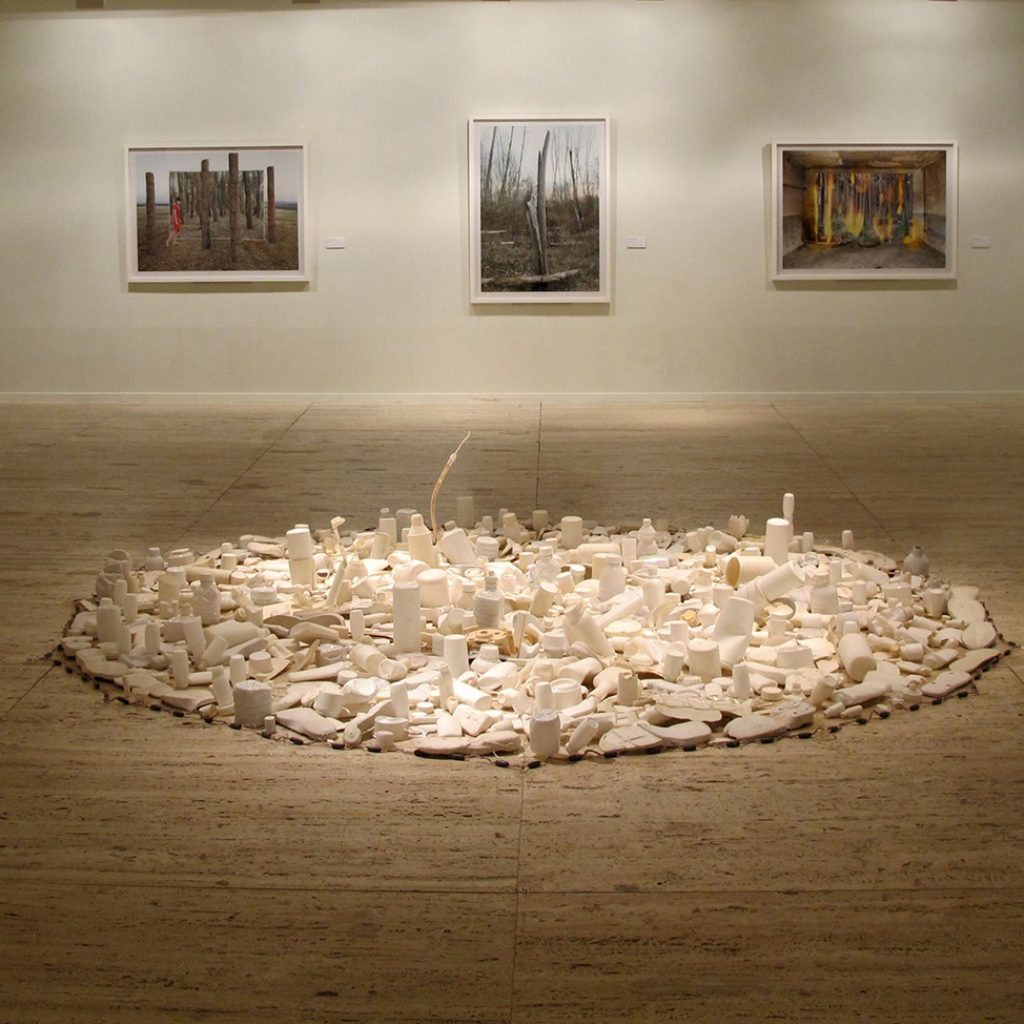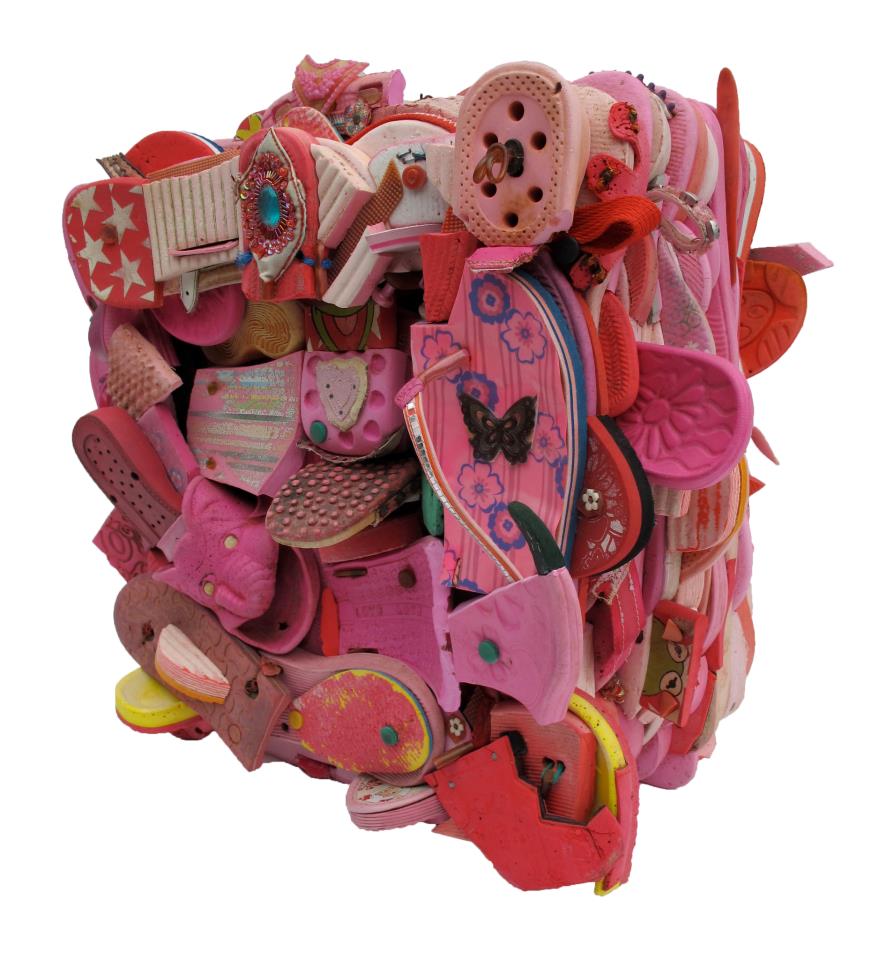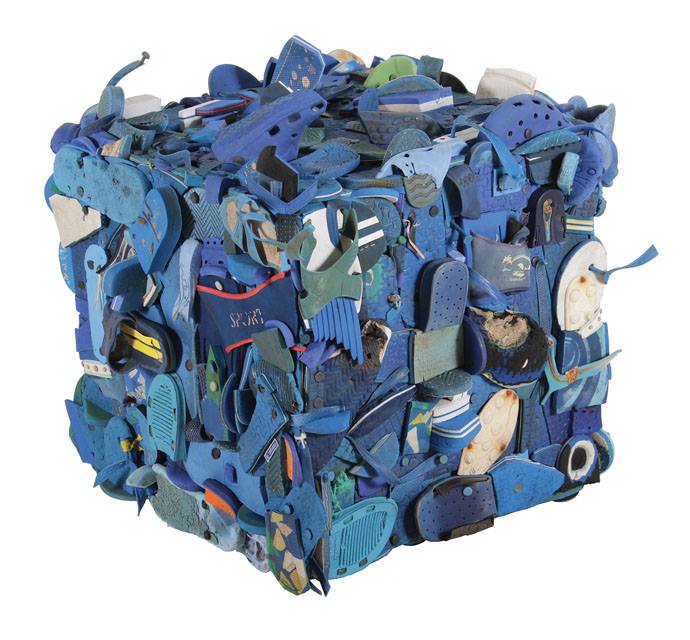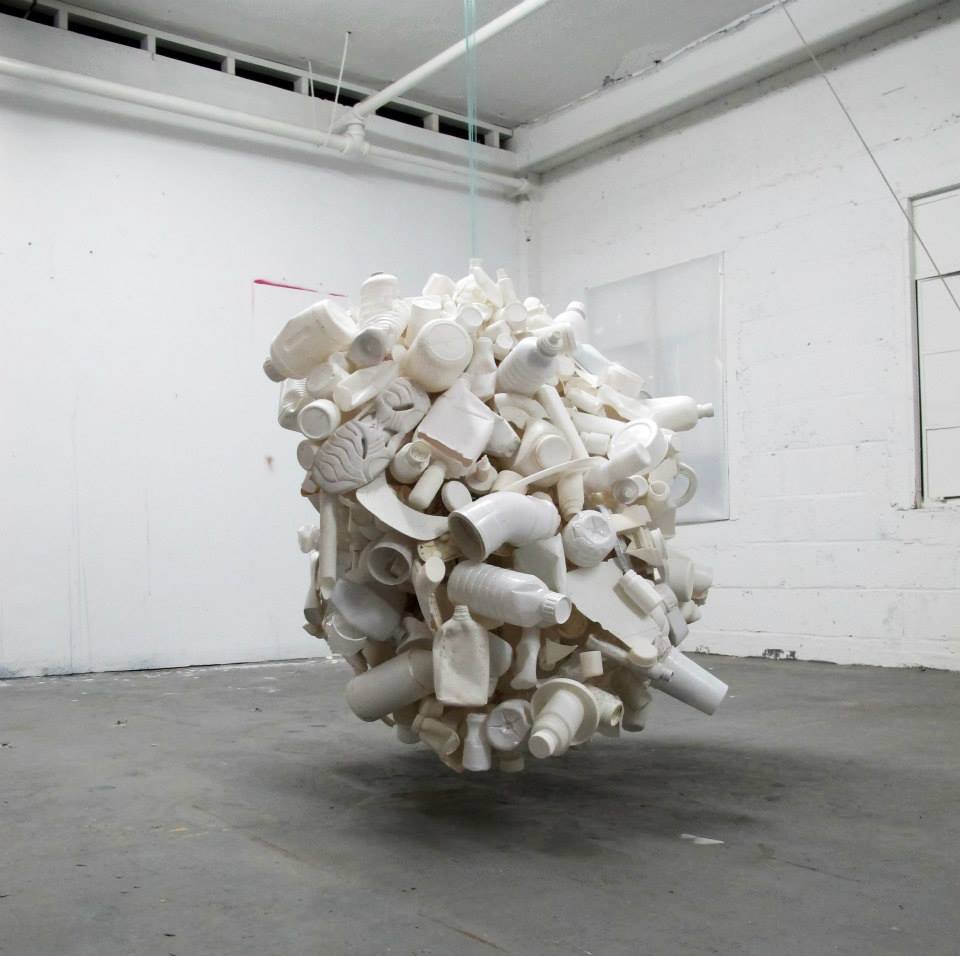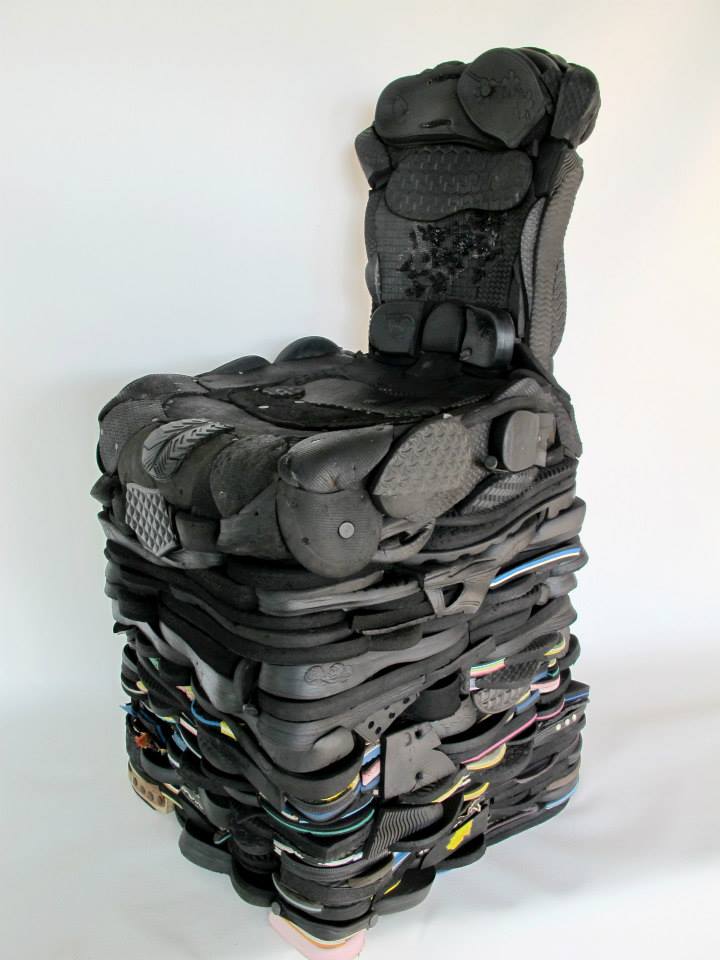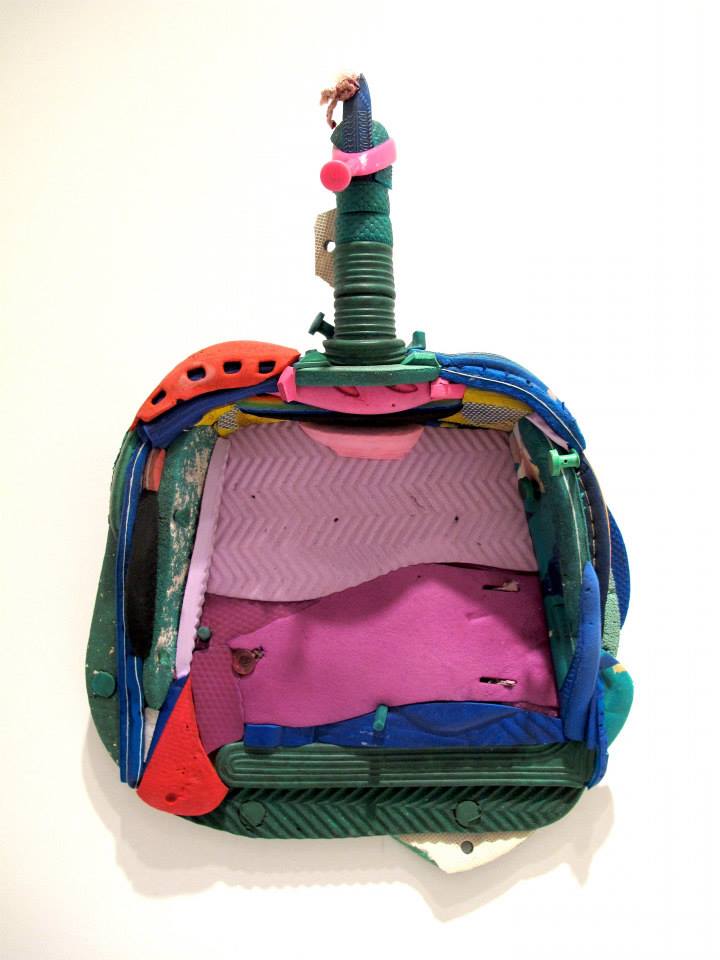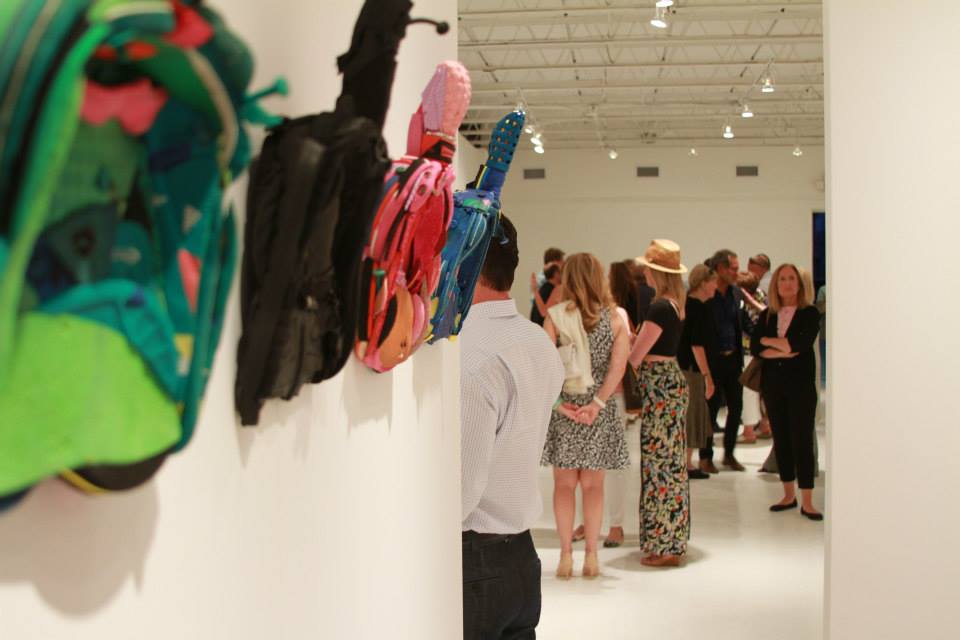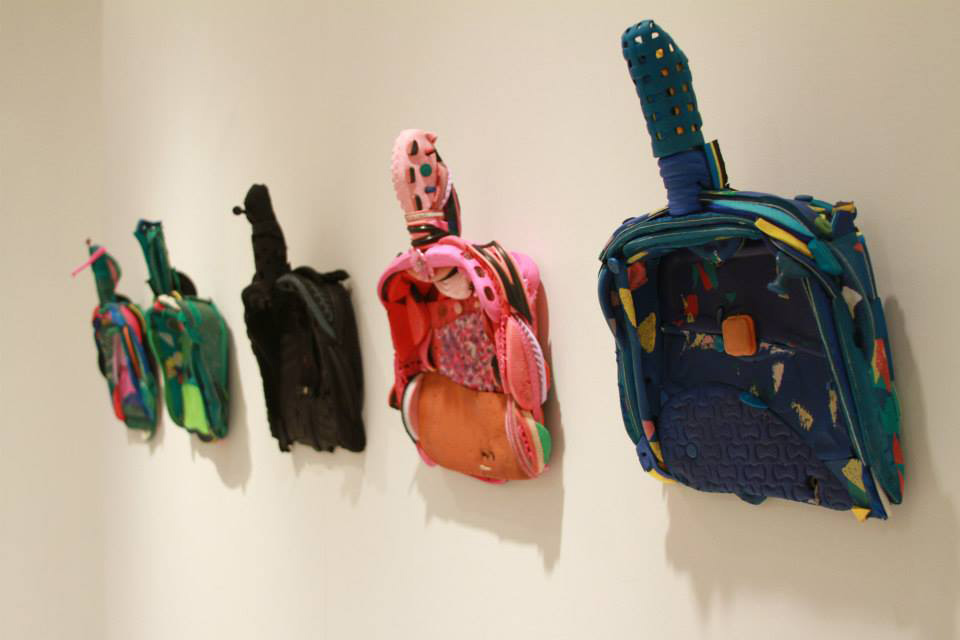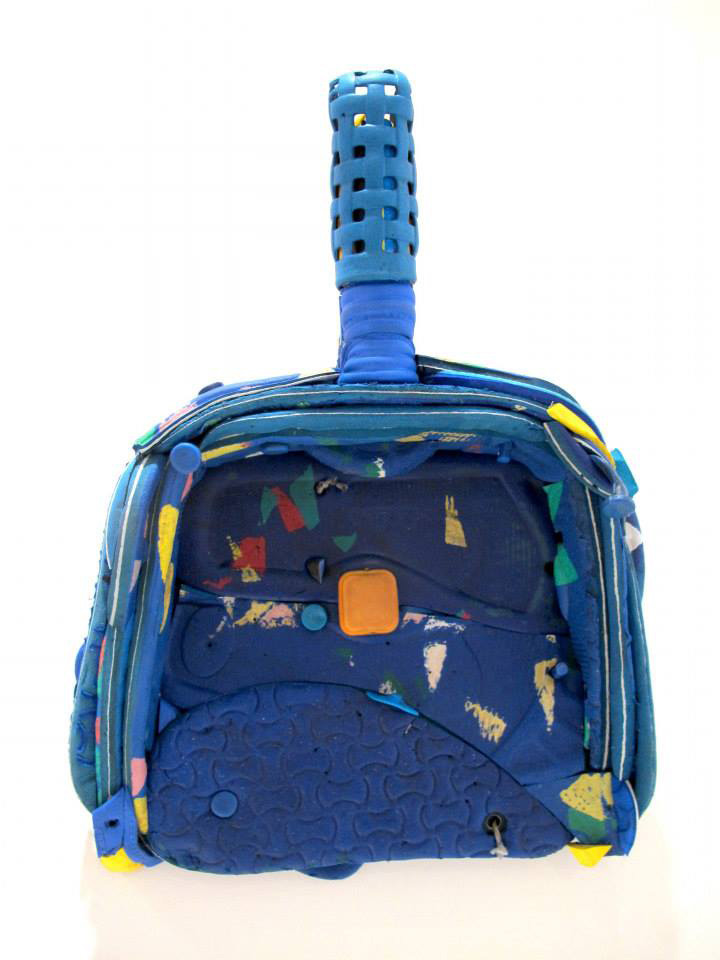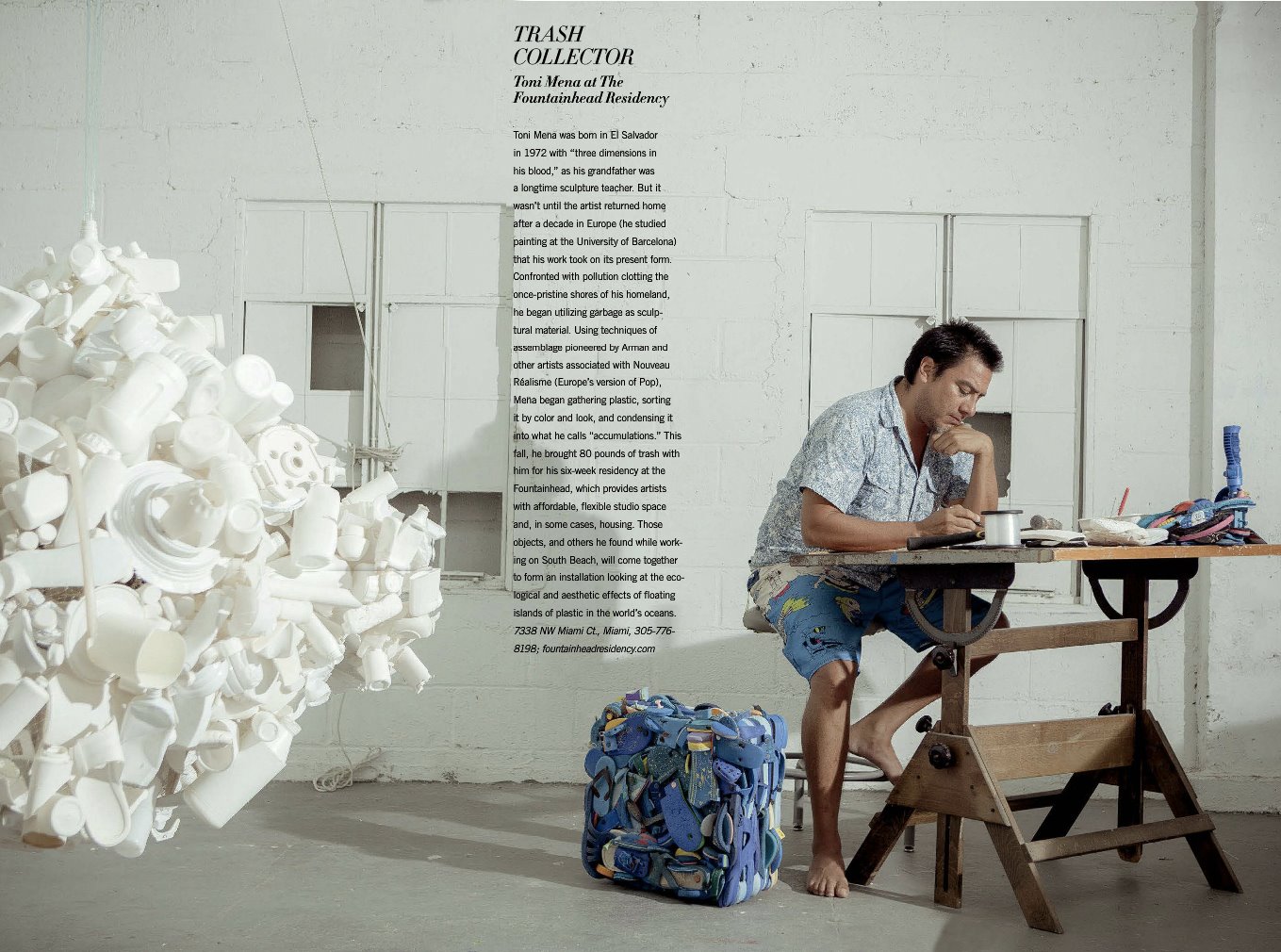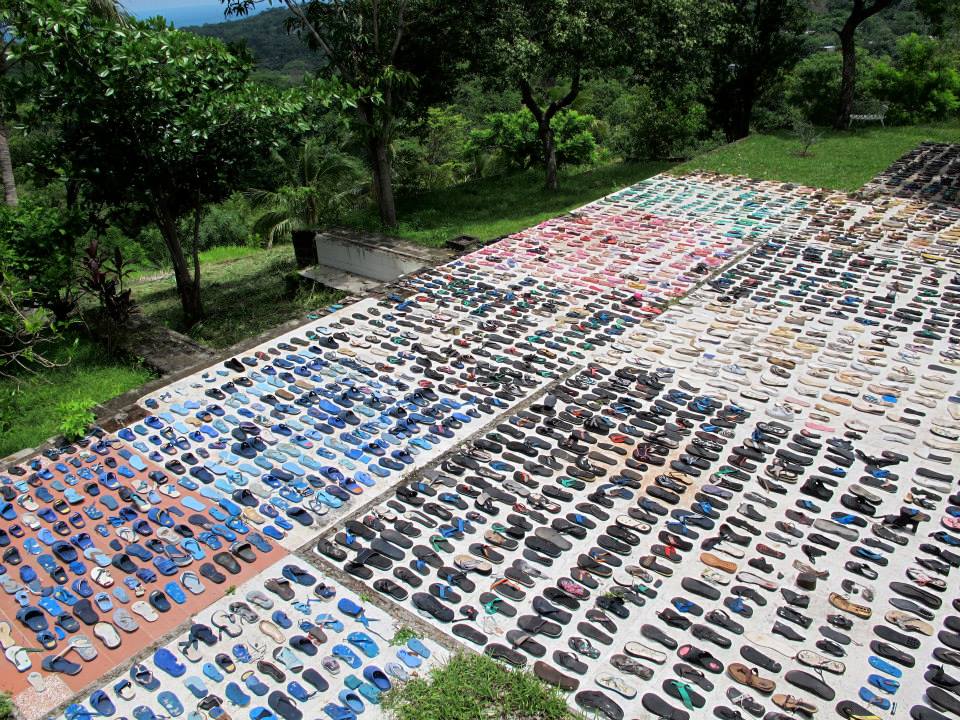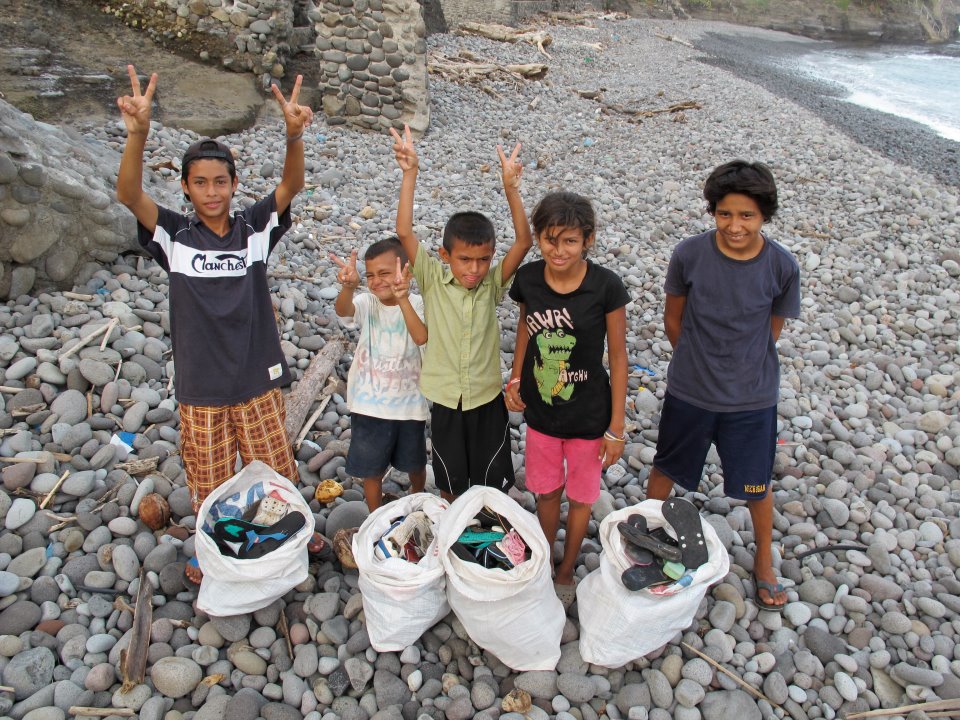plastic trash into art project
Artist Antonio Mena (from El Salvador) joins the growing collective of HAF artists, who have answered the call to confront the global ecological disaster that adversely impacts us. Included in this HAF initiative, the Plastic Trash Into Art Project are participating artists: Taeyoun Kim (Korea), Macha Melanie (France), Mena Ange Martial (Ivory Coast) and Reenie Charriere (USA). What makes Mena’s contribution to this collective uniquely special is this project is not only helping the environment and his community, but there is an overwhelmingly unique aesthetic to his sculptural installations. Most of the geometric form sculptures have a dominant monochromatic presentation. Cubes and other shapes are shades of pink, blue and black, all constructed from discarded foam – plastic material. The all black recycled plastic chair appears to be ergonomically suited for everyday use. The multi-colored, (what look to be) household waste collection pans, are very appropriate to the rubbish collection theme of Accumulations. Mena is from a beach community and sees this devastation firsthand.
Accumulations is his personal narrative on how the plastics and petroleum based byproducts we use and discard are regrettably connected to all aspects of our lives—serving as constant reminders of our hyper-consumerism and excess.
HAF: It is a pleasure to interview you regarding your work with plastics. Your Accumulations series is tremendous and left me speechless. I am aware of the motivation for your work in general, but what inspired you to encourage and recruit members of local coastal communities to help gather plastic waste along beaches for your work on Accumulations?
Mena: Thank you. That’s how I felt when I got back to El Salvador after more than 10 years in Europe, “speechless” in seeing my garden, the ocean, my surfing beach polluted. The surfing community and the local people had gotten together to do beach cleanup. For me the plastic was a bigger danger because animals will often eat it and the micro plastics too. I grew up in a coastal culture and I love my community and my surfing beach. I had to transfer the care I have for nature to the kids and the younger generation in a country—a country of young kids who are also exposed to violence from gangs, extreme poverty and government corruption.
HAF: Do you believe that community members who assisted you in gathering the plastics are enlightened by your efforts? I understand that you also recruit studio assistants to assemble your larger installation project.
Mena: I think so, yes. They saw a way of creating something and getting some income for their families too! Yes I had to hire others to help build the bigger pieces, and that was good because we are also creating additional jobs.
HAF: Your installation piece, “sea foam” really captured my attention. The collection and placement of the all white plastic forms, effectively communicated the “sea foam” that is associated with water pollution. Can you give a brief analysis about the process and purpose of your White Sea Foam models? They seem to communicate very complex stories?
Mena: Flip-flops and sandals were numerous in the start of the Accumulations project back in 2009. But little by little and year after year I ended up running out of them, so I opened up to putting together a series using everyday discarded objects. The very white ones did give me a sense of irony when you know something pure and clean is associated to sea foam. The structure I used was a fishing net of 4m/12in in diameter, invisible string, and every piece is tied up. It became very organic in the end in the sense that it adopted different forms and also different ways of installation. It is 140lb/60k heavy—with white, clean sea-discarded objects.
HAF: Lastly, do you believe your work in this area is helping to bring attention to the global challenge of the overabundance of plastics in our ecosystem within your communities and beyond?
Mena: Yes, we need to put up a strong fight to this global challenge and the overabundance of plastics in our ecosystem NOW. We need to think globally for the sake of everyone, because we are all in the same ship (earth). The pollution of the oceans is now growing faster than ever imagined. Also people are usually very irresponsible with their trash, and the collection of it by the institutions is not good or does not exist at all. This pollution crisis has taken more importance in the last few years and has led to a growing connection with other artists and institutions from other continents like Africa or Asia.
Michael K. Shelton, USA: Senior Visual Design & Website Director and contributing writer


